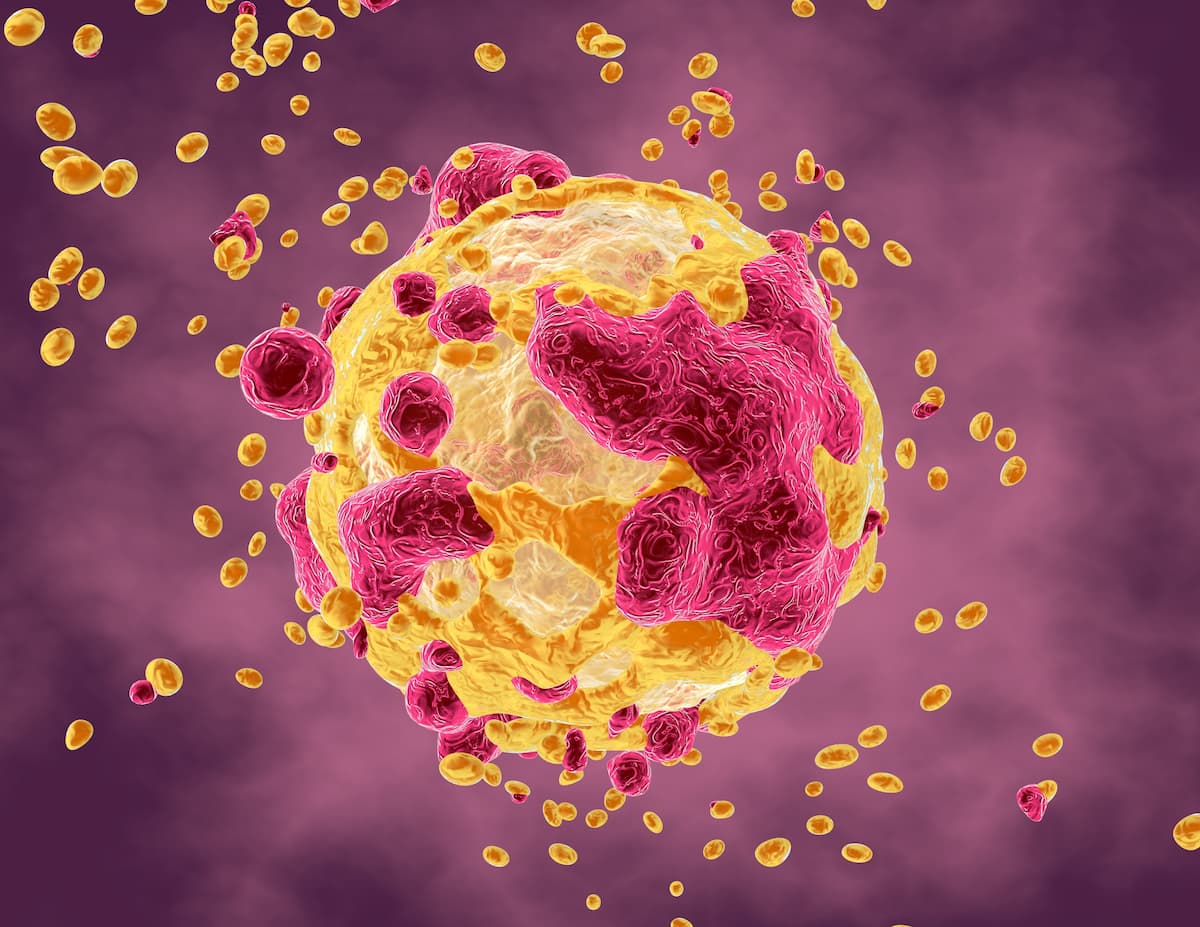Nirogacestat Yields Significant Benefit in Progressive Desmoid Tumors
Nirogacestat may be a noteworthy therapeutic advance for patients with desmoid tumors, according to an expert from Memorial Sloan Kettering Cancer Center.
Treatment with nirogacestat produced significant benefit with regard to progression-free survival (PFS) and objective response rate (ORR) in patients with progressing desmoid tumors, according to findings from the phase 3 DeFi trial (NCT03785964).1
"In the phase 3 DeFi trial, nirogacestat demonstrated significant clinical efficacy and substantially improved pain, symptom burden, physical and role functioning, and health-related quality of life in patients [with desmoid tumors]," according to an expert from Memorial Sloan Kettering Cancer Center.

With a median follow-up of 15.9 months, nirogacestat elicited a significant PFS improvement compared with placebo, lowering the risk of disease progression or death by 71% (HR, 0.29; 95% CI, 0.15-0.55; P <.001). Additionally, median PFS was not estimable (NE; 95% CI, NE-NE) vs 15.1 months (95% CI, 8.4-NE) in each respective cohort. Investigators indicated that PFS consistently improved with nirogacestat across subgroups based on sex, tumor location, focality, treatment status, previous treatments, genetic mutation status, and history of familial adenomatous polyposis.
The confirmed ORR was 41% with nirogacestat vs 8% with placebo (P <.001). Complete responses occurred among 7% vs 0% of patients in each respective cohort. Additionally, the median time to a confirmed first response was 5.6 months vs 11.1 months, respectively.
“In the phase 3 DeFi trial, nirogacestat demonstrated significant clinical efficacy and substantially improved pain, symptom burden, physical and role functioning, and health-related quality of life [HRQOL] in patients [with desmoid tumors],” lead author Mrinal M. Gounder, MD, a sarcoma medical oncologist at Memorial Sloan Kettering Cancer Center, said in a press release.2 “Importantly, nirogacestat exhibited a manageable safety profile. These results represent a noteworthy therapeutic advance for patients.”
In the international, double-blind phase 3 DeFi trial, investigators evaluated the efficacy and safety of nirogacestat compared with placebo for patients with progressing desmoid tumors. Patients were randomly assigned 1:1 to receive either 150 mg of nirogacestat or matched placebo orally twice a day, taken continuously in 28-day cycles.
The primary end point of the trial was PFS. Secondary end points included ORR and changes in patient-reported outcomes including pain, symptom burden, physical functioning, role functioning, and HRQOL.
Patients 18 years or older with histologically confirmed progressing desmoid tumors and aggressive fibromatosis were eligible for enrollment on the trial. Additional inclusion criteria included not having received previous treatment for progressing desmoid tumors not amenable to surgery or refractory/recurrent desmoid tumors treated with at least 1 line of therapy.
Of 142 patients who were included in the study, 70 received nirogacestat and 72 received placebo. The median patient age was 34 years (range, 18-76). In the nirogacestat and placebo arms, respectively, most patients were female (64% vs 65%), White (91% vs 75%), had extra-abdominal tumors (76% vs 75%), and had a single focal point (61% vs 57%).
Patients received a median of 2 prior lines of therapy in both the nirogacestat arm (range, 0-14) and the placebo arm (range, 0-19). Additionally, 74% of patients receiving nirogacestat and 81% of those receiving placebo had refractory or recurrent disease following previous treatment.
The likelihood of being event-free after 1 year of treatment was 85% (95% CI, 73%-92%) for patients receiving nirogacestat vs 53% (95% CI, 40%-64%) for those receiving placebo. The likelihood of being event-free after 2 years was 76% (95% CI, 61%-87%) vs 44% (95% CI, 32%-56%) in each respective arm.
After cycle 10 of treatment, nirogacestat produced statistically significant and clinically meaningful improvements in patient-reported outcomes, including average worst pain intensity scores (P <.001), total symptom scores (P <.001), physical functioning domain scores (P <.001), physical functioning scores (P <.001), role functioning scores (P <.001), and overall HRQOL scores (P ≤.01).
Frequent adverse effects (AEs) following nirogacestat treatment included diarrhea (84%), nausea (54%), fatigue (51%), hypophosphatemia (42%), and muscular rash (32%). Investigators reported that 95% AEs were grade 1 or 2. Additionally, 75% (n = 27/36) of patients of childbearing potential who received nirogacestat had AEs consistent with ovarian dysfunction, which resolved in 74% (n = 20/27).
The FDA previously granted priority review to nirogacestat as therapy for desmoid tumors in February 2023, which was supported by earlier data from the DeFi trial read out at the 2022 European Society for Medical Oncology Congress (ESMO).3
Reference
- Gounder M, Ratan R, Alcindor T, et al. Nirogacestat, a γ-secretase inhibitor for desmoid tumors. N Engl J Med. 2023;388:898-912. doi:10.1056/NEJMoa2210140
- SpringWorks Therapeutics announces New England Journal of Medicine publication of phase 3 DeFi trial evaluating nirogacestat in adults with desmoid tumors. News release. SpringWorks Therapeutics. March 8, 2023. Accessed March 9, 2023. bit.ly/3Ldsp44
- SpringWorks Therapeutics announces FDA acceptance and priority review of new drug application for nirogacestat for the treatment of adults with desmoid tumors. News release. SpringWorks Therapeutics. February 27, 2023. Accessed March 9, 2023. bit.ly/3SxA1Qk
Newsletter
Stay up to date on recent advances in the multidisciplinary approach to cancer.
Sarcoma Awareness Month 2023 with Brian Van Tine, MD, PhD
August 1st 2023Brian Van Tine, MD, PhD, speaks about several agents and combination regimens that are currently under investigation in the sarcoma space, and potential next steps in research including immunotherapies and vaccine-based treatments.